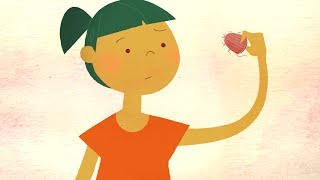(单词翻译:单击)
For centuries, people have consumed bugs,
长时间以来,人类都在食用各种虫子,
everything from beetles to caterpillars, locusts, grasshoppers, termites, and dragonflies.
从甲虫到毛毛虫、蝗虫、蚱蜢、白蚁再到蜻蜓。
The practice even has a name: entomophagy.
这种用食习惯甚至还有个名字:食虫性。
Early hunter-gatherers probably learned from animals that foraged for protein-rich insects and followed suit.
早期的狩猎采集者们大概从动物那里学到了怎样寻找富含高蛋白的虫子,并且也模仿了起来。
As we evolved and bugs became part of our dietary tradition,
随着人类的发展,吃虫子变成了我们的饮食习惯,
they fulfilled the role of both staple food and delicacy.
因为虫子既是日常可见的东西,又很美味。
In ancient Greece, cicadas were considered luxury snacks.
在古希腊,蝉被认为是很奢侈的美味。
And even the Romans found beetle larvae to be scrumptious.
罗马人甚至发现甲虫幼虫十分可口。
Why have we lost our taste for bugs?
而现在,我们为什么丧失了对虫子的喜爱?
The reason for our rejection is historical, and the story probably begins around 10,000 BC in the Fertile Crescent,
这是有历史原因的,大概要追溯到公元前一万年的肥沃月弯地区,
a place in the Middle East that was a major birthplace of agriculture.
它位于今天的中东地区,是农业的主要发源地。
Back then, our once-nomadic ancestors began to settle in the Crescent.
在那时,我们游牧民族祖先曾经在肥沃月弯地区定居下来。
And as they learned to farm crops and domesticate animals there,
他们在那儿学会了怎样种植庄稼和怎样驯化野兽,
attitudes changed, rippling outwards towards Europe and the rest of the Western world.
于是人们换了一种生活方式并向欧洲拓展,然后传到了整个西方世界
As farming took off, people might have spurned bugs as mere pests that destroyed their crops.
当农业发展了起来,人们意识到虫子只是毁坏庄家的害虫。
Populations grew, and the West became urbanized, weakening connections with our foraging past.
而当人口增加、西方开始城镇化发展以后,使得我们与我们的祖先的游牧文化的联系越来越淡。
People simply forgot their bug-rich history.
人们忘记了食用虫子的历史。
Today, for people not accustomed to entomophagy, bugs are just an irritant.
而现在,对于那些不习惯吃虫子的人,虫子成了令人讨厌的东西。
They sting and bite and infest our food.
它们叮咬人类并且祸害庄稼。
We feel an 'ick factor' associated with them and are disgusted by the prospect of cooking insects.
看到虫子我们觉得“恶心”,并且讨厌它们所烹调成的美味。
Almost 2,000 insect species are turned into food,
大约已经有2000种昆虫被转化成了食物,
forming a big part of everyday diets for two billion people around the world.
对于世界上的二十亿人类来说,这构成了他们日常饮食的很大一部分。
Countries in the tropics are the keenest consumers, because culturally, it's acceptable.
热带国家的人们是最积极虫子的食用者,因为对于他们的文化来说这是可接受的。
Species in those regions are also large, diverse,
那些地区的虫子个头很大,多种多样,
and tend to congregate in groups or swarms that make them easy to harvest.
并且喜欢聚成一大群,使得他们更容易被捕获。
Take Cambodia in Southeast Asia where huge tarantulas are gathered, fried, and sold in the marketplace.
就拿东南亚的柬埔寨来说,大量狼蛛聚集在市场上,炸来贩卖。
In southern Africa, the juicy mopane worm is a dietary staple, simmered in a spicy sauce or eaten dried and salted.
在非洲南部,多汁的蝴蝶树虫是常见的可口食物,可以用一种辣口的调料来炖或者盐腌了吃。
And in Mexico, chopped jumiles are toasted with garlic, lemon, and salt.
在墨西哥,剁碎的Jumiles(臭虫)则是和大蒜、柠檬、盐一起来烤着吃。

Bugs can be eaten whole to make up a meal or ground into flour, powder, and paste to add to food.
虫子可以整个食用,也可以被研磨成细粉、粗粉或者糊状来加在食物里。
But it's not all about taste. They're also healthy.
虫子不只是好吃,而且还很健康。
In fact, scientists say entomophagy could be a cost-effective solution for developing countries that are food insecure.
事实上,科学家认为食虫性对那些食物没有保障的发展中国家来说,能够变成一个省钱的有效途径。
Insects can contain up to 80% protein, the body's vital building blocks,
因为虫子含有80%的蛋白质,蛋白质是身体的头等重要物质,
and are also high in energy-rich fat, fiber, and micronutrients like vitamins and minerals.
虫子还富含高能量脂肪、纤维和包括维他命和矿物质在内的微量元素。
Did you know that most edible insects contain the same amount or even more mineral iron than beef,
你知道吗,大部分可使用的虫子身体内含有和牛肉相同甚至更高的铁元素,
making them a huge, untapped resource when you consider that iron deficiency is currently the most common nutritional problem in the world?
使得虫子成为了储量巨大、未经开发的资源,尤其是缺铁是现在世界上最常见的营养难题。
The mealworm is another nutritious example.
另一个有营养的例子是黄粉虫。
The yellow beetle larvae are native to America and easy to farm.
这个黄色的甲虫幼虫源自于美国且容易饲养。
They have a high vitamin content, loads of healthy minerals,
它含有很高的维他命成分、大量矿物质,
and can contain up to 50% protein, almost as much as in an equivalent amount of beef.
还包含了高达50%的蛋白质,和基本和牛肉里蛋白质的含量是等量的。
To cook, simply sauté in butter and salt or roast and drizzle with chocolate for a crunchy snack.
就烹饪方法来说,简单地用黄油和盐来炒,或者烤了沾点巧克力,就可以做成很酥软的点心。
What you have to overcome in 'ick factor,' you gain in nutrition and taste.
你不必感到“恶心”,因为你不但补充营养,还享受到了美味。
Indeed, bugs can be delicious. Mealworms taste like roasted nuts. Locusts are similar to shrimp.
虫子的确是种舌尖上的美味。黄粉虫味道像坚果。蝗虫像虾。
Crickets, some people say, have an aroma of popcorn.
至于蟋蟀,有些人认为它有爆米花的芳香。
Farming insects for food also has less environmental impact than livestock farms do
大量饲养可食用的虫子比牲畜对环境的影响要小得多,
because insects emit far less greenhouse gas and use up less space, water, and food.
因为虫子释放更少的温室气体,使用更少的空间、水还有食物。
Socioeconomically, bug production could uplift people in developing countries
对于社会经济来说,虫子的生产能提高发展中国家人们的生活质量,
since insect farms can be small scale, highly productive, and yet relatively inexpensive to keep.
因为虫子养殖是小规模高产量,且相对来说管理费用低廉。
Insects can also be turned into more sustainable food for livestock and can be reared on organic waste,
虫子能够成为对牲畜来说更环保的食物,而且能够用有机废物饲养,
like vegetable peelings, that might otherwise just end up rotting in landfills. Feeling hungry yet?
像是蔬菜的皮,不然蔬菜皮只能烂在地里。感觉到饿了吗?
Faced with a plate of fried crickets,
不过在面对一盘炸蟋蟀的时候,
most people today would still recoil, imagining all those legs and feelers getting stuck between their teeth.
一想到那些虫子的腿和触角会卡在牙齿里,现在大部分的人还是会退缩。
But think of a lobster.
但是你想想龙虾。
It's pretty much just a giant insect with legs and feelers galore that was once regarded as an inferior, repulsive food.
它其实就像个大虫子,也有腿和触角,它也曾经被认为是不好的、令人生厌的食物。
Now, lobster is a delicacy.
而现在,龙虾是一道大餐了。
Can the same paradigm shift happen for bugs? So, give it a try!
这个故事也适用于虫子吗?所以,试试吧!
Pop that insect into your mouth, and savor the crunch.
把虫子扔进嘴里,享受虫子的酥脆吧!


